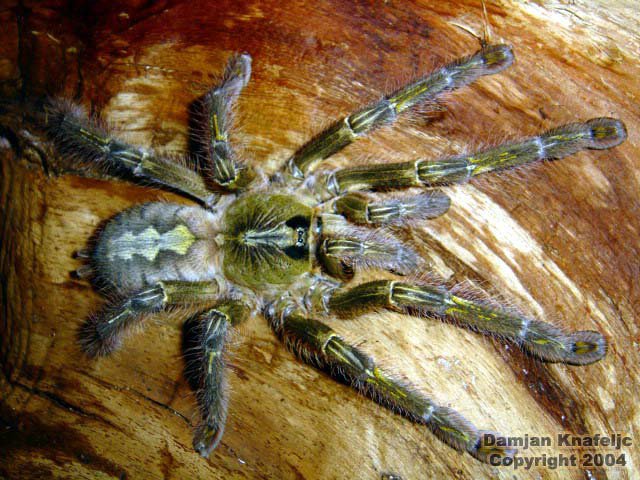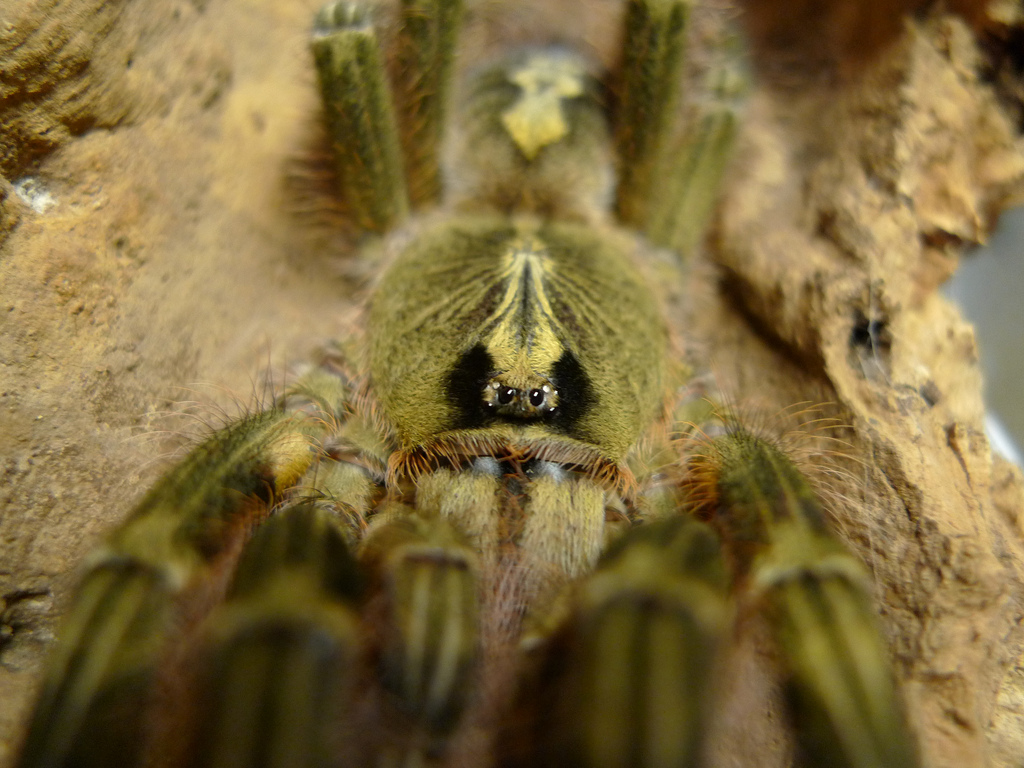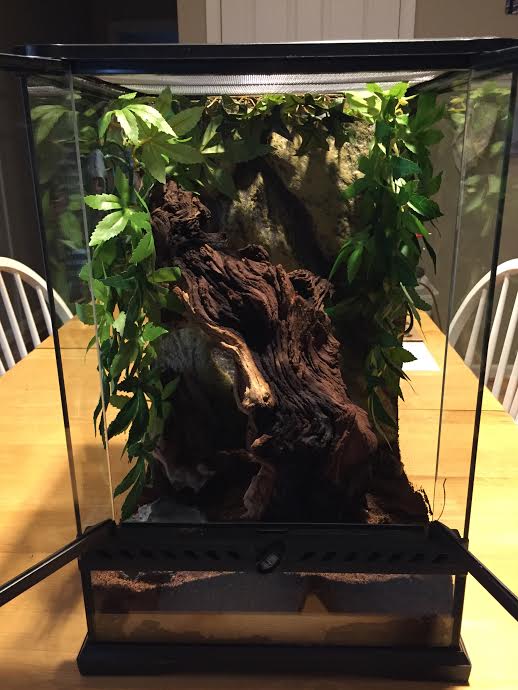
The Red Slate Tarantula
Poecilotheria rufilata
This is a tarantula that I stumbled across not long ago. The more I learn about its orgins, habitat, morphology and communal habits, the more I am hooked. Read on...
The Red Slate Tarantula is one of the largest of the arboreals and is found in only a few small locations in southern India. It is considered a very rare species with a very uncertain future due to development and habitat destruction. Its communal behavior and beautiful coloration make it an appealing addition to the collection.
Interesting Facts:
The Red Slate Tarantula is a beautiful species but the name does not appear to fit its physical appearance. They have yellow and green coloration along their legs and carapace, and their underside is adorned with iridescent blues and greens. This species tends to grow quite large (7-9 inches) and although it is not aggressive, it packs a fairly potent venom. The spiderlings have been observed jumping from the trees and gliding to the ground earning the nickname of "Parachute Red Slate". This particular tarantula can be raised with other members of its species and my ultimate goal is to raise at least four or five slings in a communal, arboreal setup.

Habitat:
The Red Slate is found in the southern ghats of India in moist evergreen and deciduous forests. They have been observed on teak plantations and sometimes enter human settlements. They are considered endangered and several studies suggest that they are destined to become extinct. They live in territories with temperatures that reach a high of 95 to 104 degrees with humidity levels around 75 to 82%. Our spiderlings will spend the first year in an acrylic enclosure and will eventually be moved to a much larger 15 gallon Exo Terra cage with a large, hollowed out log as a center piece. WiFi will be included as well.
Feeding:
According to my research, the Red Slate Tarantula is an easy eater and will devour pretty much any insects it will encounter. Depending on their initial size, the slings will be fed either fruit flies or very small crickets until they are ready to change their diet. Other breeders indicate that this species will grow very quickly and should significantly increase in size by the end of the first year.
Attitude:
Many of the arboreal species can be very skittish and can move very quickly when startled. The Red Slate are quite fast as spiderlings and eventually slow down as they approach adulthood. Some individual owners believe that the Red Slate remains out in the open to a greater extent than some of the other members of the genus. This tarantula does not use urtricating hairs and their primary line of defense is their bite. Their venom is considered to be of medium toxicity and can cause moderate pain, muscle cramps and feverlike symptoms. They are not considered to be aggressive but it is very unlikely that I will be handling these tarantulas.
As previously mentioned, these spiders are considered communal and we will be introducing 4-5 slings into a common enclosure. The intent is to avoid providing too many hiding places that will encourage any displays of territorialism.
